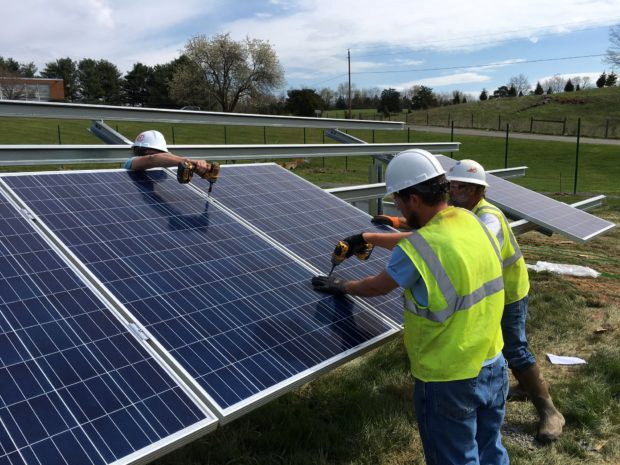How community solar could help more Floridians save money

As thousands of homeowners across the state are going solar each year, many more Floridians risk being left out. These people either rent, or cannot go solar due to shading, roof conditions, or cost. Barriers like these prevent 77% of Americans from taking advantage of solar energy.
Community solar allows renters and homeowners who cannot go solar themselves to take advantage of solar energy and lower their utility bills. Electric utilities and third-party companies build community solar projects, sometimes referred to as “solar farms” or “solar gardens,” and find residents and businesses to lease, or “subscribe” to, a small portion of that solar farm. The subscriber then receives credits towards their utility bill for the energy generated by their portion of the solar farm.
There is huge potential for community solar to benefit residents of the Sunshine State. A GTM Research report found that community solar would allow as many as 384,000 Florida residents to take advantage of solar energy by 2030 and create $4 billion in solar investment along the way.
Enabling legislation is required for a state to develop a community solar program, and no such legislation has been introduced. This means that, in a technical sense, true community solar is not yet available in Florida. [Update 2/19/19: Legislation has been introduced to make community solar available statewide.]
However, utilities and electric cooperatives across the state have been rolling out their own community solar-esque programs – with a twist. These programs may be helping utilities and cooperatives, such as Florida Power and Light, Orlando Utilities Commission, and Choctawhatchee Electric Cooperative (CHELCO), transition to cleaner energy. But they leave much to be desired for Floridians seeking to use solar energy to save money on their utility bills. All these utilities charge customers a premium for the electricity their solar farms produce.
Subscribers to Orlando’s OUCommunity Solar program, for example, will pay an additional 2.65 cents per kilowatt-hour for the electricity produced by their share of the community solar project. Similarly, subscribers to the City of Tallahassee Utility program will pay an extra 1.5 cents per kilowatt-hour. Florida Power and Light’s Solar Together program, still awaiting Public Utility Commission approval, is slightly more complex. Subscribers would pay a monthly fixed charge for each kilowatt of solar capacity they subscribe to, and then receive a credit of 3 cents for each kilowatt-hour produced by their share.
These programs are proposed as a way for utility customers to spend more to help their utility transition to more renewable generation. Customers are offered vague promises that they will start saving money, eventually, as the cost of electricity gradually increases to overtake the premium they pay for their solar energy.
In contrast, states like Minnesota, New York, Maryland, and Massachusetts – to name just a few – have implemented community solar programs in which subscribers regularly save five to ten percent off their utility bills from the very start of their subscriptions. Each of these states sees lower solar energy potential and higher installation costs than Florida, yet their community solar programs offer immediate savings. So why are utilities in the Sunshine State unable to do the same?
Florida utilities and electric cooperatives would like us to believe that ratepayers should help foot the bill for their forays into solar energy, and they have successfully pitched their efforts as a mechanism for ratepayers to “demonstrate their commitment to improving the environment,” as the Jacksonville Electric Authority’s SolarSmart program puts it. And an additional ten or twenty dollars per month may seem like a reasonable price to pay for building a cleaner energy system. But the truth is that community solar can, and should, expand access to solar energy while saving ratepayers money. Hundreds of solar farms across the country are already doing just that.
